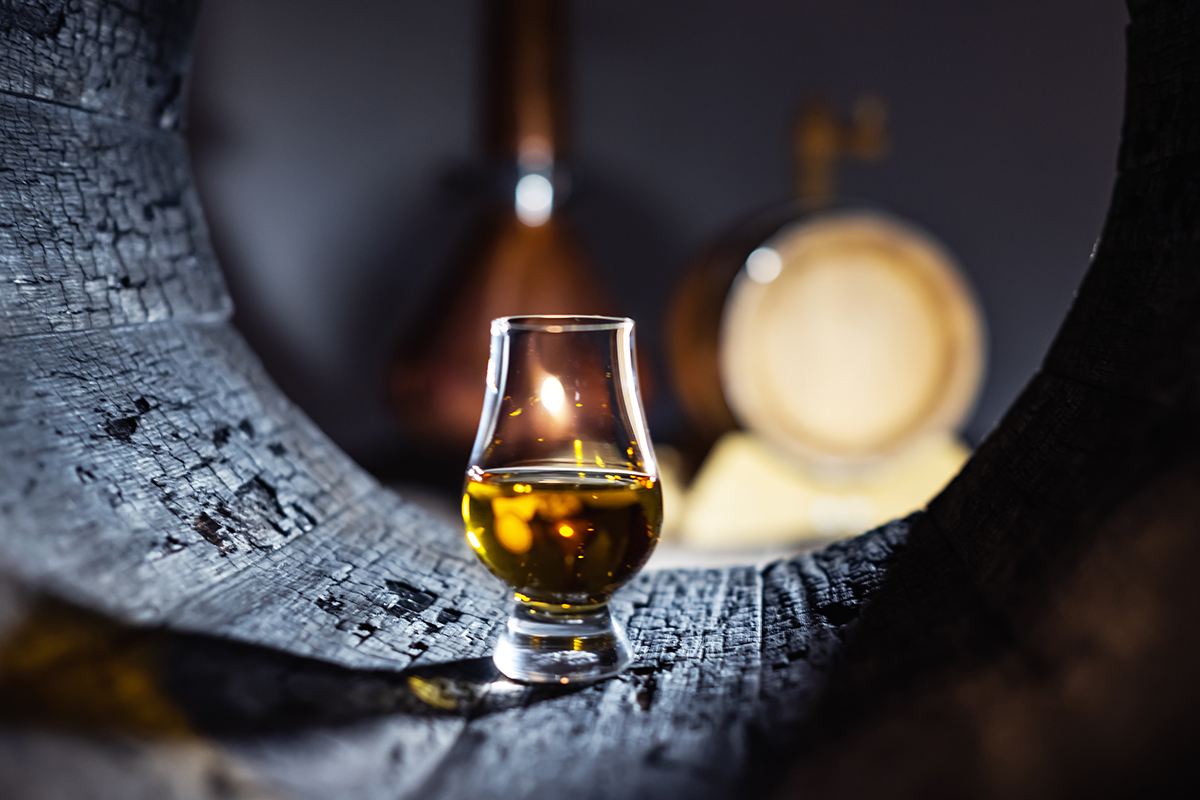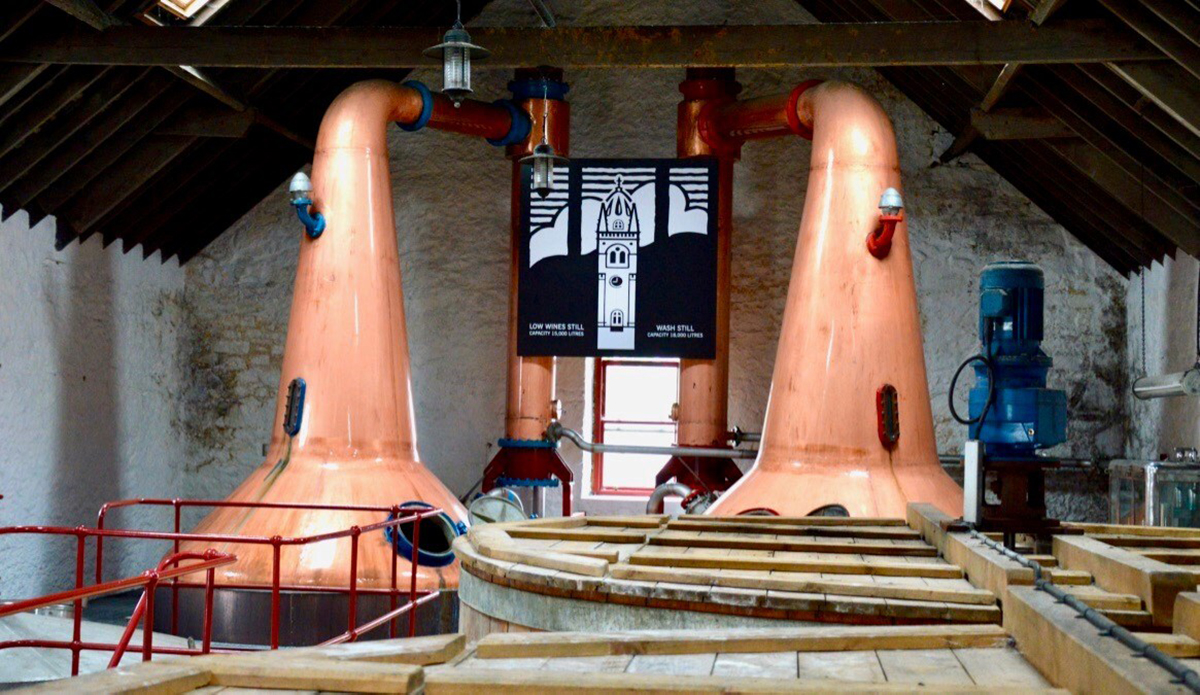If the liquor industry has taught us anything over the past 15 years, it’s that we love authenticity. Anything that is “craft” or “artisan” — made by human people with human hands — we can’t get enough of. We salivate whenever we hear of a distillery that has co-opted some of the time-honored distilling techniques finely honed by old timers.
And it’s not just the small players that have tapped into our antiquarian fascinations. In early 2021, Beam-Suntory announced that it would be investing ₤6 million into Glen Garioch Distillery in Oldmeldrum, Scotland. Some of the investment is being directed at fitting out direct fired stills and a floor maltings; both decidedly “old school”. The idea is that these distilling techniques and investments will bring the distillery’s whisky back to a better and older-type flavor. This, by extension, will lend the malt a greater air of authenticity.
This all sounds really exciting, but the question that begs to be asked is: do these older distilling techniques actually make better spirits?

Going Old School
Truthfully, this kind of question doesn’t get asked all that often. To many who happily fork over countless dollars for old method spirits, this question may even feel a bit obscene. “Of course, floor maltings and direct fired stills will make a better whiskey!”, you scream at your screen. “Technology and mass market capitalism have diluted the character of REAL whiskey for decades.”
It’s a valid argument. Of course, the flip side is that even the most die hard of the luddite class will be forced to admit that not all technology is bad. Technology has brought us antibiotics, safer foods and internet cat videos. And let’s face it, no one wants to return to a world without the edible science chimera of the Taco Bell Nacho Cheese Doritos® Locos Taco.
But in the case of Glen Garioch, what will things like direct fired stills and floor maltings actually do?
Direct fired stills do seem to produce a more malty spirit. And some caramelization reactions are believed to occur producing some interesting aromas and flavors in the process. But there’s also some debate amongst researchers about the effects of high heat application onto the formation of various compounds in the spirit. In short, it’s not an open and shut case.
As for floor maltings, the effect will likely be a bit more subtle. Certainly, bringing malting even partly back under the control of the distillery will give Glen Garioch a lot more control over the final product. And floor malting has a lower carbon footprint than modern malting processes (though it is considerably more labor intensive). But does it make a better spirit? That too is debatable.
Changes in Character
The Journal of the Institute of Brewing & Distilling not too long ago published a review article by famed whisky scientist George Bathgate titled, “The influence of malt and wort processing on spirit character: the lost styles of Scotch Malt whisky”. In his review, Bathgate looks back on the past 50 or 60 years of whisky making in Scotland as a transformational period. The industry found itself becoming increasingly more aggregated and streamlined. Efficiency became a buzzword for protecting bottom lines. And the character of the whisky began to steadily change.
The general perception is that Scotch whisky produced prior to the 70s was typically heavier and more malty than the more refined drams of today. A lot of this had to do with how the grain was malted (interestingly fairly unrelated to whether it was floor malted or not). Can we say that these whiskies were “better” than the drams of today? Maybe. But maybe not. Very few bottlings from those periods still exist. And for the ones that do, they are often held as prized investments and won’t likely be consumed anytime soon, if ever. The best we can say is that the whiskies were different. And as we all know, being different is neither bad nor good. It’s just different.

Photo Credit: Thijs Klaverstijn
Consumer Demands
Notably, these changes away from “traditional” distilling techniques were done largely with the approval of the consumer. Many distillation firms during the 70s and 80s began to notice trends that indicated the average consumer was showing a preference for lighter spirit styles. Gradually reducing the heaviness of the spirits they sold wasn’t just about using technology to increase their profit margins directly. It was also done to create spirits that more readily appealed to the average drinker.
Of course, now the market pendulum has steadily been swinging the opposite direction. Once again we may be witnessing a gradual change in spirit character to better meet the ever-fickle demands of the booze drinker. It’s a cycle that is likely as old as the liquor market itself.
So, do old school distilling techniques actually make better booze? Just like any kind of craft, it really depends on the talent of the craftsmen involved in the liquid’s manufacture. Archaic methods from times past won’t automatically produce liquid gold if the distiller doesn’t even know how to distill water. And we should always remember that good spirits come from both camps. Technology, just like the old methods it replaced, is not inherently bad. It just makes a different end product. Which means we’ve got a lot of different things to taste out there and that’s never a bad thing.
Want to sample some old vs new school distilling techniques?
With Distiller, you’ll always know what’s in the bottle before you spend a cent. Rate, Review, and Discover spirits. Head on over to Distiller, or download the app for iOS and Android today!
Want to enjoy Distiller ad-free plus exclusive discounts, giveaways, features and other perks? Join Distiller Pro today to support the Distiller platform and keep ads off of your screen.



